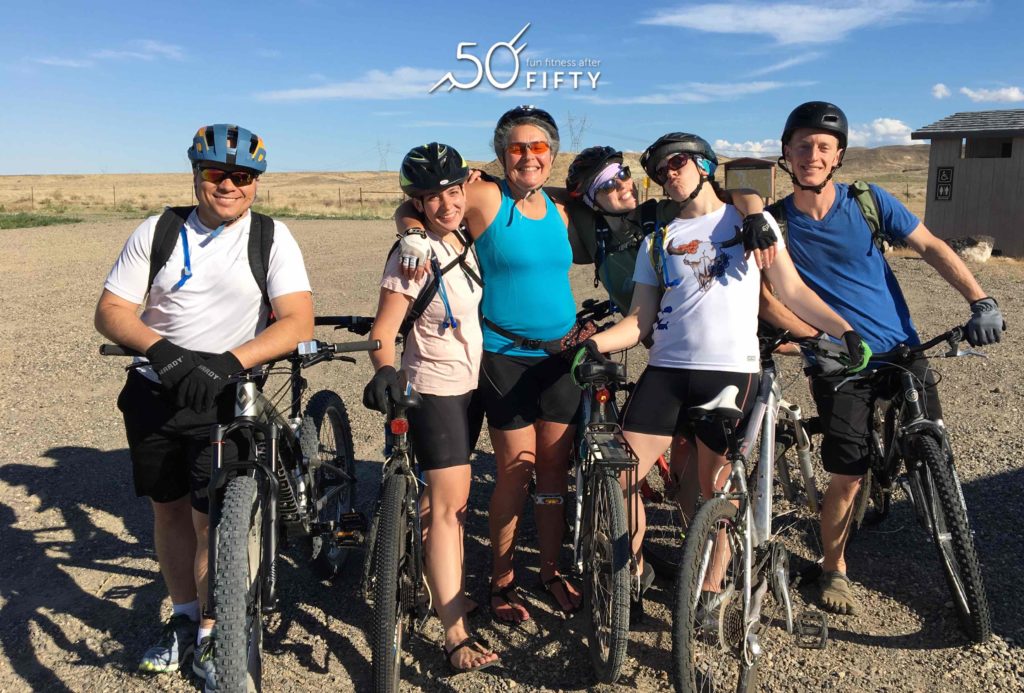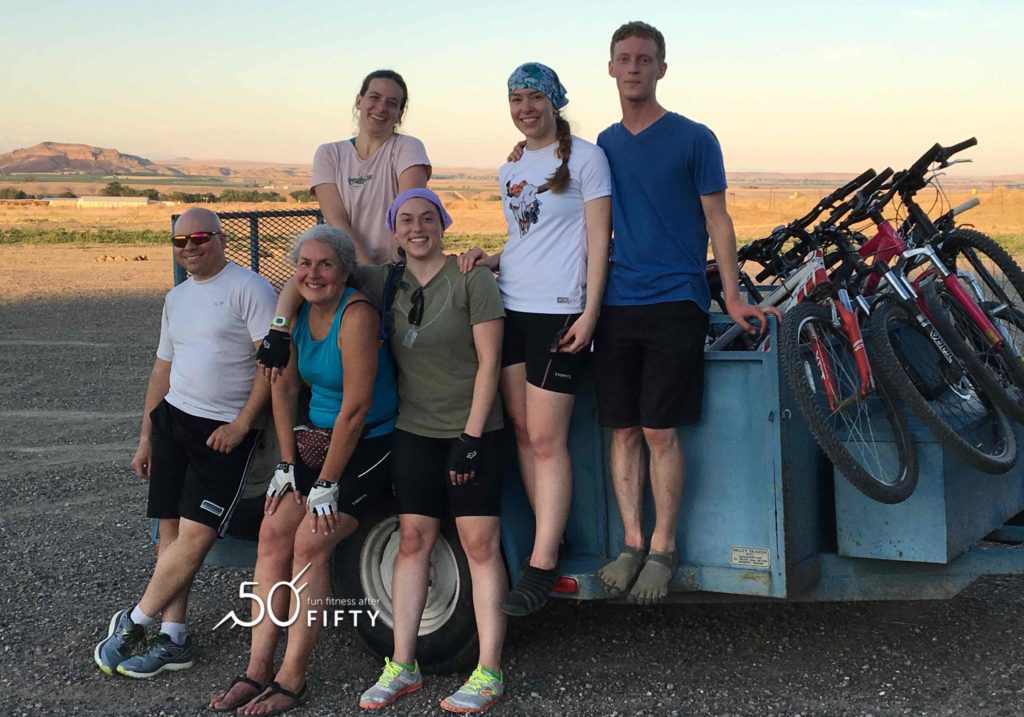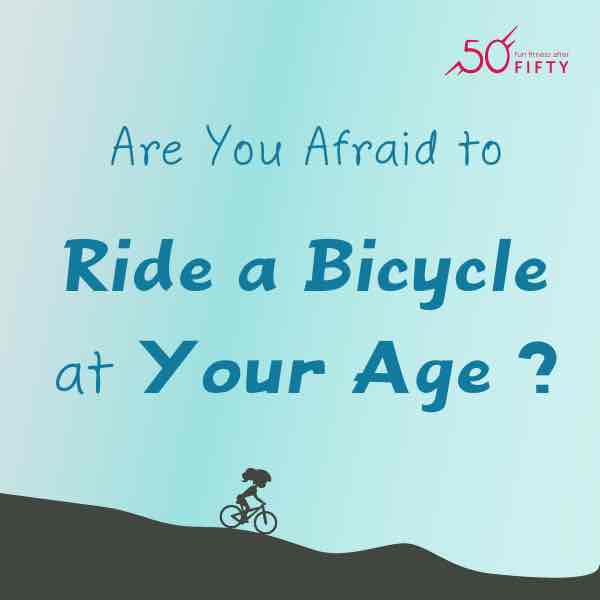Who needs Disneyland?
I was recently surprised to survive a mountain bike ride. I found myself vacillating between
You only live once!
and
If I crash, will I die?
This in spite of cycling being recommended as one of the least stressful exercises for the body.
Actually, I wasn’t being foolhardy. I would say it was a combination of trying to trust what skills I do have and working the course. Oh, and encouragement and insight from dear husband. Is this a reasonable approach at my age of 57 years?
What is your biggest concern about cycling?
The biggest concern is that the older our bodies are, the less resilient they are about healing. Just how much less resilient may be up for discussion, because there are so many more variables than age. Nutrition, overall body strength, and good circulation will all impact healing significantly.
There are a number of strategies for bicycle riding, too. If you haven’t been bicycling for a while, you shouldn’t start with a mountain bike challenge. You want to gradually develop the necessary muscle strength and experience that will help you respond to more challenging terrain.
Ways to keep bicycling fun and challenging
Here is my list of advice for getting back to cycling or continuing on your cycling journey.
- Start with a comparatively stable bicycle. For instance, what is known as a road bike is supposed to be lighter and make cycling more efficient, but it is also quite a bit less stable. Make sure you have a well developed sense of balance and are fairly experienced reacting to the terrain before trying a less stable bike.
- Avoid traffic. Find greenbelt paths or simple trails to ride on. Drivers are too often unpredictable and unknowledgeable about bicycles on roadways. Bicyclists can be hard to see on the road even when drivers are paying attention. Trying to manage that can make riding much less enjoyable, as well as distract you from learning how to ride your best.
- Ride at a comfortable speed, but not too slowly. Enough forward motion actually helps you stay upright, especially when you hit uneven spots or debris.
- Keep your joints relaxed. This includes elbows, knees, back. This will help you react to the terrain with a more fluid motion. It will also mean less stiffness after the ride. If you do have the misfortune to crash or fall, you will be more likely to respond with adjusted movements or roll with the punches, so to speak.
- Make sure your bicycle seat is angled correctly. Even the best bicycle seat will cause you great soreness if positioned poorly. Of course, if your sitter is not used to sitting on a bicycle, you risk soreness if you increase your time too drastically, but at least start with a well-positioned seat.
- Find a good seat height to pedal ratio. Typically, you want your leg to still be slightly bent when the pedal is fully extended. If you want to get off to a really good start with this, you might consider having the proportions of your bicycle professionally adjusted. I know avid cyclists who swear by this. All I have ever done is make sure that the bicycle seat is basically at the height of my hip bone.
- Invest in some cushioned bicycle gloves. This is not a lot of cushion, but it can make your hands much more comfortable.
- Wear the right kind of sunglasses. You want to both protect your eyes from drying in the motion enhanced wind, as well as avoid being blinded by changes in sunlight. I have a pair of cycling sunglasses that do just that.
- Make it a habit to alternate pressure points while riding. For instance, when you are not actively pedaling, take a moment to slightly rise off the seat for a second or two. Or make sure that you are not constantly leaning hard on your wrists.
- Experiment with your brakes before you seriously need them. This includes knowing which are front and which are back brakes. You never want to hit only your front brakes while going downhill! Also, you will want to lean a certain way while braking, depending on hills or turns.
- Use one of those quaint bicycle bells. Not only is it polite to let walkers know you are passing, but you are less likely to crash if everyone around has an idea you are there.
- Consider supplementing your outdoor cycling with a stationary bicycle. While there are important differences, this will still help condition your legs and get used to time on a bicycle seat.
- Let your feet and ankles function with good range of motion. Your knees and hips are designed to be in motion in symphony with proper foot and ankle movement. If you confine your feet you risk stress in the wrong places. Wearing looser footwear (usually sandals) also makes my toes less likely to go numb!
Don’t forget basics like a helmet and good inner tubes. And take someone with you who knows how to fix a flat… or have a phone. I have not yet been able to master changing a flat tire. Mechanical repairs are definitely not my forte.
So is bicycling all that age dependent?
I think we can conclude that most levels of bicycling are not so much a matter of being too old as possibly being unprepared. Get a bicycle that is in good repair, find some friends who can both encourage and advise, and get out there and bicycle!
When you have built up your skills and strength, don’t be afraid to try some more varied terrain. You can walk hills if you need to. Most of the youngsters walked the same hills I did on that mountain bike ride, and they are all in great shape! My husband powered up more than anyone. He is a few months older than me.
PS – This ride was out in the Owyhee desert, south of Nampa, Idaho, beginning at Hemmingway Butte trailhead.



